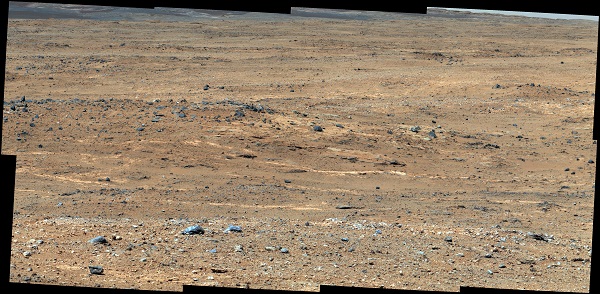
This Sept. 7, 2013, image provided by NASA, taken by NASA’s Curiosity rover shows a view of Gale Crater near the Mars equator. Experiments by Curiosity found no trace of methane gas in the Martian atmosphere, according to a study released on Thursday, Sept. 19, 2013. AP PHOTO/NASA
WASHINGTON—Hopes of finding life on Mars suffered a setback after new findings from NASA’s Curiosity rover detected only trace amounts of methane gas in the Red Planet’s atmosphere, a study said Thursday.
In the past decade, scientists have reported large “plumes” of methane in the Martian atmosphere, findings that have remained controversial because they were made on the basis of observations from Earth or an orbiting satellite.
Researchers said in March 2003 that they had found a cloud near the Martian equator containing some 19,000 tons of methane.
However, analysis of data from Curiosity’s onboard instruments shows only trace amounts of methane in Mars’s atmosphere.
Scientists said Curiosity’s findings indicated that the maximum level of methane was 1.3 parts per billion by volume—about six times lower than previous estimates.
The low atmospheric methane level greatly reduces chances that Martian soil contains living microbes or organic fossil materials that would produce the gas, scientists said.
The findings also reduce the likelihood of significant levels of methane being produced geologically or from meteorites, according to California Institute of Technology researcher Christopher Webster, co-author of the study published in the journal Science.
Previously identified methane plumes may have been the result of misinterpretations of observations, including those made from Earth-based telescopes, according to the researchers.
Curiosity, which touched down on the Martian equator in August 2012, has already established that Mars may have been hospitable to microbial life in the distant past.
In recent weeks, the robot has begun trundling on a five-mile (eight-kilometer) journey toward Mount Sharp, the two-year mission’s main target for exploration.
The journey is expected to take several months, with Curiosity stopping along the way to analyze geological formations.
The foot of Mount Sharp is of particular interest because sedimentary layers may reveal when Mars was suitable for life, according to NASA.


